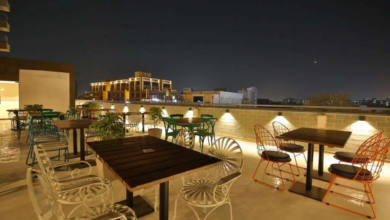Annapurna Circuit Trekking Season: The Best Time to Trek Annapurna Circuit

The Annapurna Circuit is one of the most iconic trekking routes in the world, attracting thousands of trekkers each year. With its breathtaking views, diverse landscapes, and rich culture, the circuit offers a once-in-a-lifetime experience for those who seek adventure in the heart of the Himalayas. However, when planning a trek, choosing the best time to trek Annapurna Circuit can make all the difference. Weather conditions, temperature, and trail conditions play an essential role in shaping your trekking experience. This article will guide you through the Annapurna Circuit trekking season, explaining the different seasons and helping you decide on the best time to trek Annapurna Circuit.
Why is Choosing the Right Season Important?
The Annapurna Circuit spans a wide variety of terrains, including tropical lowlands, alpine meadows, and high-altitude deserts. With this diversity comes varying weather conditions, which can dramatically impact your trekking experience. The right season ensures better weather, trail conditions, and overall comfort during the trek. The Annapurna Circuit trekking season can be divided into four distinct periods: the autumn season, the spring season, winter, and the monsoon season.
The Autumn Season: The Best Time to Trek Annapurna Circuit
Autumn is undoubtedly the best time to trek Annapurna Circuit for most trekkers. It offers clear skies, moderate temperatures, and a dry trail, making it the most popular trekking season. Here’s why autumn should be your top choice for trekking.
Advantages of Trekking During Autumn
- Clear Skies and Stunning Views During autumn (September to November), the weather is dry, and the skies are typically clear. The views of the Annapurna and Dhaulagiri mountain ranges are unparalleled, making for some of the most scenic trekking experiences in the world. The clear skies allow trekkers to fully appreciate the magnificent beauty of the snow-capped peaks, alpine forests, and picturesque villages along the circuit.
- Comfortable Temperatures In autumn, temperatures are moderate and pleasant, making it easier to walk and trek at higher altitudes. At lower elevations, daytime temperatures range from 10°C to 20°C (50°F to 68°F), while temperatures at higher elevations vary from -5°C to 10°C (23°F to 50°F). It is neither too hot nor too cold, allowing trekkers to comfortably enjoy the trek.
- Dry and Safe Trail Conditions Autumn offers a dry trekking experience, as the monsoon rains have ended. This makes the trails less slippery and easier to navigate, reducing the risk of accidents such as falls or landslides. The absence of rain also ensures that the lodges along the trail remain accessible and comfortable.
- Festivals and Cultural Celebrations The autumn months coincide with the major festivals of Nepal, such as Dashain and Tihar. These celebrations provide trekkers with an incredible opportunity to experience the local culture, customs, and religious practices of the people in the Annapurna region. From local dances to colorful rituals, autumn brings a lively and festive atmosphere to the trek.
Disadvantages of Autumn Trekking
- High Number of Trekkers Since autumn is considered the best time to trek Annapurna Circuit, it is also the peak season for tourism. This means that the trails, lodges, and tea houses may be crowded. While this may not affect your overall experience significantly, it’s something to be mindful of when planning your trek.
- Higher Costs The peak trekking season also brings higher prices for accommodations, meals, and services along the trail. While prices are still relatively affordable, it’s important to budget accordingly for your trek.
Spring Season: A Close Contender for the Best Time to Trek Annapurna Circuit
Spring, which lasts from March to May, is another fantastic time to trek the Annapurna Circuit. Though slightly less popular than autumn, spring offers many of the same advantages, with fewer crowds. Let’s take a look at why spring is an excellent time to trek the Annapurna Circuit.
Advantages of Trekking During Spring
- Moderate Temperatures Spring offers pleasant temperatures similar to autumn. During the day, temperatures range from 15°C to 20°C (59°F to 68°F) at lower elevations. At higher altitudes, temperatures vary between -5°C and 10°C (23°F to 50°F). These mild conditions make the trek comfortable, even at higher elevations.
- Floral Blooms Along the Trail One of the most striking features of trekking the Annapurna Circuit in spring is the bloom of the region’s famous rhododendron forests. As you trek, you’ll walk through fields of vibrant red, pink, and white rhododendrons, creating a stunning backdrop for your adventure. The scenery is spectacular, and the fragrant flowers add a unique charm to the trek.
- Clear Weather Like autumn, spring also experiences clear weather, offering excellent visibility of the surrounding mountain peaks. While there may be occasional rain showers, the weather remains mostly dry, making it ideal for trekking.
- Fewer Crowds Than Autumn While spring is a popular season for trekking, it tends to be less crowded than autumn. This means you’ll encounter fewer trekkers along the route, allowing for a more peaceful and personal experience in nature.
Disadvantages of Spring Trekking
- Possible Rain Showers Though spring is mostly dry, occasional rain showers may occur, especially toward the end of May. These rains are generally not severe, but they can create muddy conditions on the lower trails, which may slow you down.
- Longer Days Spring comes with longer days, which means you may need to trek for extended hours to reach your destination. While this can be an exciting challenge for experienced trekkers, those new to the trek may find the longer days demanding.
Winter Season: A Quiet, Challenging Trek
Winter (December to February) offers a quiet, serene trekking experience, but it comes with several challenges that make it unsuitable for inexperienced trekkers. The Annapurna Circuit trekking season during winter offers peace and solitude, but trekkers need to be well-prepared for the cold temperatures.
Challenges of Trekking in Winter
- Cold Temperatures Winter is extremely cold, with temperatures dropping to -20°C (-4°F) or lower at high altitudes. This can make trekking uncomfortable and even dangerous, especially for those not properly equipped with high-quality winter gear. The cold can also lead to frostbite if trekkers are not adequately protected.
- Snow and Ice on the Trail Snowfall in winter can make the trekking path slippery, especially at higher altitudes. The trail can become treacherous due to ice and snow buildup, making it challenging for trekkers to maintain a steady pace and navigate the route safely.
- Limited Services Many tea houses and lodges along the Annapurna Circuit close during winter due to low demand and harsh weather conditions. Those that remain open may have limited services, making it difficult to find food and accommodation. You may need to carry additional supplies, including extra food and warm clothing.
- Difficult Passes High-altitude passes, such as Thorong La, can be hazardous in winter due to heavy snow and icy conditions. Trekkers should be highly experienced and in excellent physical condition to undertake the Annapurna Circuit in winter.
Benefits of Trekking in Winter
- Solitude and Peace One of the main benefits of trekking during the winter months is the solitude. Since winter is the off-season, fewer trekkers attempt the Annapurna Circuit, giving you the opportunity to enjoy a peaceful, undisturbed trekking experience. The trails are quiet, and you can enjoy the serene beauty of the Himalayas without the crowds.
- Stunning Mountain Views On clear days, winter offers some of the most breathtaking mountain views. The crisp air and clear skies provide unmatched visibility, and the snowy landscapes add a unique charm to the trek.
Monsoon Season: A Risky Time for Trekking
The monsoon season (June to August) brings heavy rains, making it the least favorable time to trek the Annapurna Circuit. Although some trekkers still attempt the trek during this period, the conditions can be challenging and dangerous.
Disadvantages of Trekking During the Monsoon Season
- Heavy Rainfall The monsoon season brings frequent rain showers, which make the trail muddy and slippery. Landslides are common, and trekkers face the risk of trail blockages or even accidents due to the wet conditions.
- Leeches and Mosquitoes The wet conditions also bring out leeches and mosquitoes, which can be a nuisance during the trek. While not dangerous, they can cause discomfort, especially during the lower-altitude portions of the trek.
- Poor Visibility The heavy rainfall and cloudy conditions often obstruct the views of the mountains, which can diminish the trekking experience. The visibility of the surrounding peaks is reduced, and the scenery is not as spectacular as in the other seasons.
Should You Trek in the Monsoon?
While it’s not recommended for most trekkers, experienced adventurers who are properly equipped and prepared for the wet conditions may choose to trek during the monsoon. However, this is generally not advisable for beginners due to the safety risks associated with the weather.
Conclusion: The Best Time to Trek Annapurna Circuit
The best time to trek Annapurna Circuit depends on your preferences and priorities. If you seek clear skies, stunning mountain views, and pleasant weather, autumn (September to November) and spring (March to May) are ideal. These seasons offer the best combination of weather, visibility, and trekking conditions.
If you prefer a quieter, more peaceful experience and are willing to face cold temperatures and snow, winter (December to February) may be suitable. However, the challenging conditions and potential dangers make it more suitable for experienced trekkers.
Avoid the monsoon season (June to August) unless you are an expert in trekking during adverse conditions. The rainy weather, slippery trails, and safety risks make it a difficult time to embark on the Annapurna Circuit.
Ultimately, the Annapurna Circuit trekking season you choose will determine the kind of experience you have. However, regardless of the season, the Annapurna Circuit is a trek that will leave you with unforgettable memories of the majestic Himalayan landscape.




